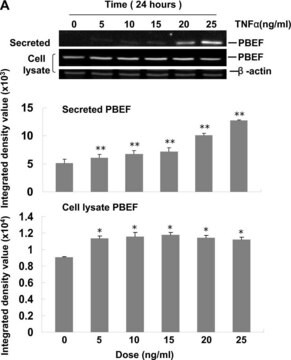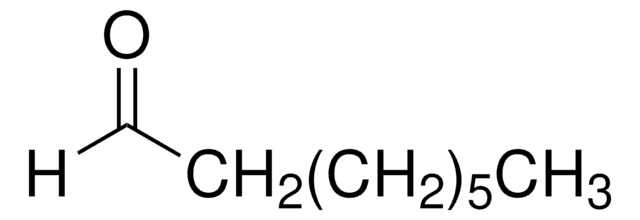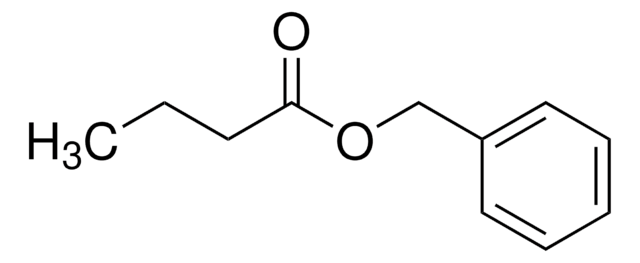Kluczowe dokumenty
W218626
Butyl butyrate
natural, ≥98%, FCC, FG
Synonim(y):
Butanoic acid butyl ester, Butyl butanoate, Butyric acid butyl ester
About This Item
meets purity specifications of JECFA
Polecane produkty
klasa czystości
FG
Fragrance grade
Halal
Kosher
natural
Poziom jakości
300
400
agency
follows IFRA guidelines
meets purity specifications of JECFA
zgodność regionalna
EU Regulation 1223/2009
EU Regulation 1334/2008 & 178/2002
FCC
FDA 21 CFR 117
Próba
≥98%
charakterystyka ekologicznej alternatywy
Less Hazardous Chemical Syntheses
Use of Renewable Feedstocks
Learn more about the Principles of Green Chemistry.
sustainability
Greener Alternative Product
współczynnik refrakcji
n20/D 1.406 (lit.)
bp
164-165 °C (lit.)
gęstość
0.869 g/mL at 25 °C (lit.)
Zastosowanie
flavors and fragrances
Dokumentacja
see Safety & Documentation for available documents
alergen pokarmowy
no known allergens
alergen zapachowy
no known allergens
kategoria ekologicznej alternatywy
Organoleptyczne
green; fruity; sweet
ciąg SMILES
CCCCOC(=O)CCC
InChI
1S/C8H16O2/c1-3-5-7-10-8(9)6-4-2/h3-7H2,1-2H3
Klucz InChI
XUPYJHCZDLZNFP-UHFFFAOYSA-N
Szukasz podobnych produktów? Odwiedź Przewodnik dotyczący porównywania produktów
Powiązane kategorie
Zastosowanie
- Recruitment of Hippodamia variegata by active volatiles from Glycyrrhiza uralensis and Alhagi sparsifolia plants infested with Aphis atrata.: This research explores the role of butyl butyrate as a volatile compound in attracting predatory insects to plants infested with aphids. The study provides valuable insights into plant-insect interactions and the potential use of natural volatiles in integrated pest management (Jiang et al., 2024).
Hasło ostrzegawcze
Warning
Zwroty wskazujące rodzaj zagrożenia
Zwroty wskazujące środki ostrożności
Klasyfikacja zagrożeń
Aquatic Chronic 2 - Flam. Liq. 3
Kod klasy składowania
3 - Flammable liquids
Klasa zagrożenia wodnego (WGK)
WGK 2
Temperatura zapłonu (°F)
124.9 °F - closed cup
Temperatura zapłonu (°C)
51.6 °C - closed cup
Środki ochrony indywidualnej
Eyeshields, Faceshields, Gloves, type ABEK (EN14387) respirator filter
Wybierz jedną z najnowszych wersji:
Masz już ten produkt?
Dokumenty związane z niedawno zakupionymi produktami zostały zamieszczone w Bibliotece dokumentów.
Nasz zespół naukowców ma doświadczenie we wszystkich obszarach badań, w tym w naukach przyrodniczych, materiałoznawstwie, syntezie chemicznej, chromatografii, analityce i wielu innych dziedzinach.
Skontaktuj się z zespołem ds. pomocy technicznej









